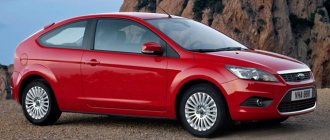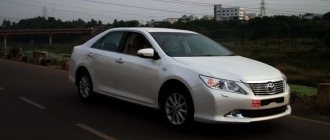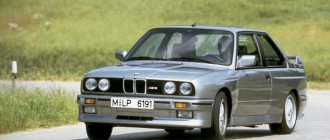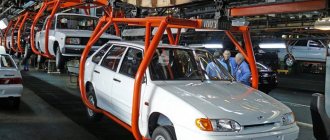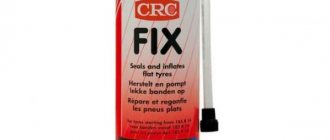Let's start with the official part: what do our traffic regulations require?
Paragraph 178 of the Rules states: “Transportation of children in a passenger car equipped with seat belts must be carried out using:
- child restraint devices appropriate for the weight and height of the child - up to the age of five years;
- child restraint devices corresponding to the weight and height of the child, other means (boosters, special seat cushions, additional seats) that allow you to safely fasten a child using seat belts provided for by the design of the vehicle - from the age of five to twelve years.
It is allowed to transport children under the age of 12 years without the use of the devices specified in part one of this paragraph if the child’s height exceeds 150 centimeters, as well as in a taxi car.
It is prohibited to transport children in the front seat of a passenger car using child restraints appropriate for the weight and height of the child, the back of which is facing the windshield of the vehicle, if the front seat has an airbag, unless the front airbag mechanism is disabled.”
At what age can you use the device?
At what age can a booster seat for children be installed instead of a seat? If the child has not yet reached three years of age, then he cannot be transported in this device. But, in addition to age, you also need to focus on the weight and height of the passenger.
Most boosters are designed to weigh between 15 and 45 kg. It is definitely too early to transfer a child who weighs less than 15 kg from a car seat, even if he has already reached the required age. In addition, the adapter is designed for a child’s height from 120 cm, although most people advise not to rush into replacing until the baby has gained at least another 10 cm.
Helpful Hint: As long as your child fits in a booster seat and is doing well when traveling in it, do not place him or her in a booster seat.
Why do children need to be transported in special restraints, and not just with a pillow?
As experts say, a child is not a “little person” at all. For example, a baby’s head accounts for up to 1/3 of the total body weight; of course, he is not yet ready to bear heavy loads on the cervical spine. It is for this reason that the smallest children are transported in a “zero” group seat installed against the direction of travel. Also, in young children, the pelvic bones are not yet able to withstand the loads from the lap belt, so even in chairs of the first group, vertical belts are used.
Fastening with standard seat belts
If a standard seat belt is used to secure the child booster, then it is also used to secure the child himself. In this case, it is important to use three-point belts, since transverse belts alone are not enough. In this case, the device itself is attached directly to the bottom tape, which is passed under its armrests, and the baby’s body is secured using a diagonal belt. There are also models of child seats equipped with additional small straps to increase the level of safety. To correctly install such a product using car seat belts, it is important to consider:
- Armrest height. It should provide the baby with a comfortable position, as well as proper fixation in place in case of braking or sharp turns.
- Belt tension level. They should not be over-tightened.
- No slipping. The device should be secured with a belt only after ensuring a tight fit to the seat.
In general, installing the product this way will only take a few minutes. But even when using very high-quality products, it will not be possible to ensure reliable fixation of the child with a booster in this way. This is due to the fact that there is a possibility that the seat itself will shift forward under the baby, which could result in the belt squeezing his organs or neck. For this reason, during sudden braking there is no guarantee of the baby’s safety.
Wait, what kind of groups are there?
Age group 0 includes bassinets for infants, which are installed transversely (sideways) and secured with a standard seat belt. The child just lies in such a cradle.
Age group 0+ is designed for children weighing up to 13 kg (up to about one and a half years). As we have already said, they are installed rearward to prevent injuries to the cervical spine in the event of sudden braking or a frontal collision.
Group 1 is intended for the transportation of children weighing from 9 to 18 kg (from 9 months to approximately four years).
Groups 2/3 are designed for older children: the second - for children weighing 15-25 kg (3-7 years), the third - 22-36 kg (6-12 years).
| Group | Location | Weight | Age (approx.) |
| 0 (cradle) | lateral | up to 10 kg | up to 6 months |
| 0+ (carrying) | against the move | up to 13 kg | up to 1.5 years |
| 1 | against the move / along the move | 9-18 kg | 9 months - 4 years |
| 2 | along the way | 15-25 kg | 3-7 years |
| 3 (boosters) | along the way | 22-36 kg | 6-12 years |
How to choose a booster. Tips for choosing
Before purchasing this product, it is important to consider some more features, in addition to the design and the presence of additional elements, namely:
- The choice must be made with the child. He is the one who should evaluate the booster. When sitting on it, the baby should feel comfortable and comfortable;
- Pay attention to the overall dimensions of the booster. It is allowed to use the product “for growth”, but it should not be significantly large, that is, it should not be taken with a “large margin”, otherwise safety will be less ensured;
- Workmanship. It is important to evaluate the manufacturing materials, tailoring features, base material, etc.
One of the keys to purchasing a high-quality booster that meets all requirements is the reputation of the manufacturer. There are a lot of them, and most of them are little known and the quality of their products is not always the best. Well-known manufacturers include Geobi, Bertoni, Lorelli, Britax, Chicco. The models of boosters that they produce are also quite large, so the choice of product should be approached thoroughly and all the nuances taken into account.
But we note that many do not recommend purchasing an expensive booster, especially if it is designed only for a certain age range; mid-price models are often quite suitable.
So many gradations! So, is it important to follow them?
Yes, since the effectiveness of restraint devices and, accordingly, the safety of small passengers depends on this. So, it is very important not to rush into the transition from group 0+ to the first group - for the reasons stated above - unless the chair of the 1st group also implies rear-facing installation. By the way, the ECE R129 (i-Size) standard (in force since 2020) implies rear-facing transportation up to 15 months of age. It is also worth remembering that the chair is designed for a child’s weight up to 13 kg. When it is reached or the head begins to protrude above the back of the chair, it is time to move on to the next step.
In the same way, it is important not to switch prematurely from the first to the second or third groups, because this means abandoning vertical straps in favor of a standard car belt that passes “through” the seat. Here, the guideline is not only age, but also weight (more than 18 kg). However, we note that the chairs can be designed for several groups at once.
Well, you should completely abandon a car seat or booster when the child’s height exceeds 150 cm. It is this, and not weight or age, that is decisive from a safety point of view. The fact is that cars are designed to fit the parameters of adults. Accordingly, passive safety equipment (belts, side airbags and curtains) will be ineffective at best, and at worst can lead to injury.
Other types of devices
To ensure children's safety when driving a car, in addition to the booster, other types of restraint devices are used.
These include:
- Frame car seat.
- FEST – adapter for belts.
- Chair without frame.
Which is safer: car boosters or car seats?
According to experts, a frame chair is a more reliable device than a booster. They base this claim on numerous crash tests.
This chair has a number of undeniable advantages :
- The child is secured using seat belts with five points.
- There is a reliable back.
- There is a headrest.
- There are sidewalls, which is important for side impacts.
Note! The advantages of a frame car seat compared to a booster seat are the presence of additional elements that increase safety.
Is it possible to use FEST when transporting a child?
The FEST adapter is used to connect two seat belts to each other: lap and shoulder, placing them in the chest area of a small passenger. This “maneuver” allows you to fix it in the right place without squeezing the child’s neck.
On a note! A number of experts have their own opinion on this matter. They do not recommend using the FEST adapter, citing the results of crash tests. According to the tests carried out, experts conclude that both during a minor collision and during a major accident, the adapter does not ensure the safety of the life and health of a child. Some users who left comments on social networks complain that this product often moves and puts pressure on the child’s tummy, causing the baby considerable discomfort.
Sometimes parents use a booster and a FEST adapter, combining them with each other. There is no prohibition on such actions, just as there is no expediency in them. There is no additional protective function of the adapter here. After all, the baby has already been raised to the desired level with the help of a booster; he is secured with seat belts that do not put pressure on his neck.
Is it worth buying a frameless chair?
A frameless car seat is another device that you can purchase to save money on your family budget. But are such savings justified? – Most likely, the answer will be negative. Such a chair cannot provide the required level of safety. It lacks side protection and does not support the neck or head. With a sharp blow or a noticeable jolt, the child can be seriously injured, including damage to the spinal column. Seat belts in a frameless chair do not have much reliability to withstand the load in an emergency situation, which will inevitably cause harm to a fragile child’s body.
Remember! Frameless child car seats cannot guarantee a high level of safety for children's health and life.
Conclusion : According to experts, the most reliable are frame retention devices with a metal base. It is the frame that will bear the brunt of the impact during an emergency, whereas when using a chair that does not have a frame, the load will fall on the child’s body.
Boosters are noticeably cheaper than seats, but no worse?
The advantages of the seats are additional lateral protection: developed “ears” prevent the child’s head from dangling during a side impact and reduce the risk of injury. Boosters do not provide any lateral protection, but provide a higher seating position, allowing standard passive safety equipment - belts and airbags - to perform their function. According to experts, from a safety point of view, it is better to use the seat until the end, and use the booster for teenagers who have simply not yet grown to 150 cm.
What is a booster in cosmetics?
Skin is the largest human organ, a kind of barrier from the outside world. To give an everyday example, the epidermis is the roof of a house, the role of which is the human body. The roof performs its protective function - excellent. But it often happens that cracks and damage appear on the roof. And now snow, rain and wind fall inside the home, destroying furniture, floors and walls. Same with skin. That is why on the shelves of cosmetic stores you can now find a huge variety of care products, the action of which is aimed at patching holes in the “roof”. We are, of course, talking primarily about serums. And not so long ago, a new product appeared - a booster, which is not an analogue of the serum and does not replace it, as many customers mistakenly believe.
What is a booster in cosmetics?
A booster is a skin care product that is a liquid emulsion of a transparent or creamy shade. The purpose of the booster is to capture all the beneficial substances from cosmetics and deliver them to the deep layers of the epidermis. This product is most often produced in the form of a bottle with an applicator.
It has long been no secret that almost all store-bought creams, serums, and so on have only a superficial effect on the skin. They can soften and prevent dehydration by creating a barrier film, but they do not penetrate deep inside. This is why many aesthetic and dermatological problems with the epidermis (acne, dryness, pimples, inflammation, wrinkles) remain unresolved, even if you buy the entire arsenal of beauty products. The mesoscooter partly solves this “superficial” problem, but not all girls are ready for this rather painful procedure.
The booster was created as an analogue of injection cosmetology and ampoule Korean cosmetics. The substances included in the new product capture the benefits from any skin care product: be it serum or cream, they deliver them to the deep layers of the stratum corneum, causing them to “earn” intensively. In addition, almost all such conductors also contain additional ingredients that have a beneficial effect on the epidermis.
How to use the booster?
- For enriching creams, masks and any other cosmetic products. Just add one or two drops to a bottle of your usual skin care product, and it will enhance its effect. As dermatologists say, a good booster can be mixed with absolutely anything that has a liquid texture.
- As a stand-alone product. The booster should be applied after all cleansing procedures to dry skin before using serum or day/night cream. However, it is important to maintain a balance here. For a booster effect, it is enough to distribute one or two drops on the face. The skin will absorb as much booster as it needs now. The excess will remain on the surface, forming a film.
- To prevent clogged pores when applying liquid foundation or blush. Instructions for use are exactly the same as in the first point: insert a drop of the conductor into a tube with a decorative cosmetic product (a syringe may be needed), and use the foundation or blush as usual. In this case, boosters labeled “for cleansing the skin” are suitable.
- To prevent chapped lips. Drop the booster into liquid lipstick or gloss and your lip skin will receive additional protection. For this purpose, choose moisturizing boosters.
What types of boosters are there?
There is now a huge variety of types of boosters: there are moisturizing, brightening, anti-aging, and healing “conductors”. But boosters with probiotics (useful bacteria) have now gained particular popularity in many Western countries. It is believed that microorganisms live on our epidermis, just like in the stomach. They make your skin feel and look healthy. But when a disruption occurs in the microflora on the surface of the body, the stratum corneum begins to react: pimples, inflammation or excessive dryness appear. A probiotic booster is designed to solve exactly this problem by maintaining an optimal balance between “evil” and “good” microorganisms on the surface of the skin.
Little advice:
It's up to you to decide whether to buy a booster or not. But if you have made an affirmative decision, then carefully study the composition of the product before it settles on your dressing table. Many manufacturers now intentionally or out of ignorance misinterpret the purpose of the booster, replacing beneficial “conductor” substances with essential oils. Esters, of course, can be present in the composition of the product, but the booster should not consist entirely of them.
What is important to remember when choosing a chair?
At a minimum, it must be suitable for the child’s weight and age group, and also meet safety standards. Remember that ECE R44.03 is already outdated, so ECE R44.04 and the latest ECE R129 (i-Size) are current. The tag must also have a symbol with a capital letter E and a numeric index (code of the country that provided the approval) placed in a circle.
In addition, it is worth paying attention to the evaluation based on test results. By analogy with the well-known EuroNCAP car crash tests, various independent organizations (ADAC, STIWA, Auto, Motor und Sport, Autobild, Which magazines) test child restraints, assigning them ratings and assigning stars. For example, the Swiss TCS club has been doing this since 1968, checking 40 models annually. So, study the ratings before purchasing and give preference to their “good” and “excellent” ones.
Tried and tested
The most popular safety tests in Europe are carried out by the Independent German organization ADAC, which annually tests the most popular models of all categories and classes. ADAC tests are distinguished by a more stringent and varied load system than those carried out during the mandatory certification of child car seats. The severity of the consequences of a collision is assessed using modern dummies equipped with a large number of sensors that record impact loads. For testing, dummies are used that simulate children aged from several months to 10 years: Q0, Q1, Q1.5, Q3, Q6 and Q10 (the number indicates the parameters corresponding to the age of the child).
During the test, each chair is tested with dummies of two different ages, as well as with different position settings and different types of fastenings provided by the design. In addition, all car seats undergo frontal and side impact testing, and everything that happens is recorded by precise time-lapse photography, which is then analyzed by experts.
In Russia, crash tests are carried out by the Test Center of the State Scientific Center NAMI. Photo: depositphotos.com
In Russia, crash tests are carried out by the Test Center of the State Scientific Center NAMI, on the basis of which there is a special test site. As Denis Zagarin notes, they conducted hundreds of various tests, testing all types of child restraint systems from Chinese counterfeits to high-end child car seats.
— According to official accident statistics, in 2020 there were 9,361 accidents involving children as passengers, 359 children died, and 11,007 children were injured. And in each case, this is someone’s pain and an irreparable tragedy. Therefore, the issue of properly transporting children in a car should be the most important when organizing any trip for any parent, because he makes a choice, and therefore bears double responsibility for the little passenger. The State Traffic Inspectorate today is actively working with parents who need to have complete information on how to correctly select and use child restraints. We recommend that all parents make a responsible choice, check certificates, do not buy cheap counterfeits and analogues, and focus primarily on the comfort and safety of their child, taking into account his height and weight when selecting a device class,” emphasizes the Deputy Head of the Department of Promotion of Road Safety and Prevention child road traffic injuries of the Main Directorate for Road Safety of the Ministry of Internal Affairs of Russia, police colonel Sergei Khrantskevich.
By the way!
The first child restraint device was invented in the 60s of the last century by Dr. Bertil Aldmann, who later became a professor of road safety at Chalmers University of Technology. He was inspired by astronaut chairs and the restraint systems used to bring them back to earth.
The Volvo automaker took over the testing of the innovation. The first car to feature a remote control system was the Volvo PV544.
The material was prepared within the framework of the Federal Target Program “Improving Road Safety in 2013-2020”
Proper use is very important!
According to European statistics, in approximately 50% of cases, child restraint systems are used incorrectly, and this is a disaster, because incorrectly fastening or adjusting the belts can lead to injuries in the event of an accident.
Thus, it is important to carefully study the instructions for using the chair and follow its instructions, especially regarding securing the chair and using belts/straps. Detailed instructions are always included in the kit, and a diagram is provided on the chair itself.
Each time you install the chair, make sure that it is securely fixed and that the straps do not sag. A common mistake parents make is to tighten the belts over their child's winter clothing, which results in an insufficiently tight fit and can lead to injury in the event of a collision. The straps must be passed under outer clothing, ensuring good tension. And of course, when installing a rear-facing seat in the front seat, it is important to disable the passenger airbag.
Remember that when it comes to security, there are no trifles, and mistakes are too expensive. When traveling, do not forget that the most valuable thing in a car is your little passengers, and their health and life are your main priority.
Has your current car become too small for your family? See minivans in the Auto Business ad database
Booster car seat - main parameters
The use of a bus bus is only permitted if the child is between 3 and 12 years of age. But age restrictions are not the only indicator indicating the possibility of transporting a child using one or another special means.
There are restrictions on height and weight:
- The weight at which a booster is allowed to be used is in the range of 15-36 kilograms. If the child has already exceeded the age of three, and his weight has not reached 15 kilograms, then it will not be possible to use the device without violating the rules.
- The baby's height should be less than 1 meter 20 cm. A taller child will be difficult to securely and correctly secure with seat belts.
Note! Regardless of what is written in the instructions for using the booster, experts give the following recommendation - start using the booster when the boy or girl reaches the age of 5 years. Typically, by the age of three, children are rarely quite tall.
Reviews of Pedal Booster from Drive2.ru
- From the owner of Chevrolet Cruze 1.6:
“As soon as you touch the pedal a little, the car immediately rushes forward, as if you were pressing almost to the floor, due to this small touch you get the feeling of a big increase in dynamics. Although in reality there are no more horses. I measured it from 0-100, the same result. Consumption also increases by a couple of liters"Read full post
- From the owner of Ford Focus 1.6:
“I installed an electronic booster pedal device, I was pleased with the dynamics in the car, I got tired of the flimsy gas pedal, acceleration is picking up faster than it was before”
Read full post
- From the owner of Mitsubishi Lancer 2.0:
“By the method of a scientific experiment, while driving a friend’s car, I felt an objective difference in the acceleration (gas pedal sensitivity) of the car, depending on the selected operating mode of the booster pedal”
Read full post
Manufacturers, general overview of models
So who makes the boosters? First of all, these are such giant manufacturers of children's goods as Chicco, Happy baby, Heyner, Sparco. The domestic market is represented by products created both in Russia itself and in Europe or China.
What should you pay attention to when purchasing, what parameters and features are common among boosters?
- dimensions (seat depth, width and height, as well as weight);
- fastening system;
- the shape of the seat and armrests, their height and ergonomics;
- the presence of internal belts (they are provided in a very small number of models), cup holders, and a cover;
- passenger age;
- quality of upholstery (the fabric should not cause irritation, it is good when it is pleasant to the touch, easy to clean, breathable);
- appearance (design for boys, girls, unisex, absence or presence of a pattern).
Potential buyers should also know that a good quality booster consists of four layers: a metal base frame, plastic, a softening layer (most often foam rubber) and outer upholstery.
What do parents say?
For many years now, many forums have been discussing whether a booster seat is considered a child seat, how justified its purchase is, and whether it is worth the money. The answer to all these questions is quite simple. No, a booster seat is not a seat, it’s just a part of it. It is very inferior to a traditional car seat for children in terms of ensuring the safety of the child. But! An older baby may simply refuse to sit in a chair that is closed on three sides, and therefore it is better to change it to a booster than not use anything at all. In addition, if the seat is selected based on the weight, height and build of the baby, it will provide him with comfort and convenience during the trip, and give parents peace of mind for the safety of their precious child. And this is the answer to the question of the feasibility of such an acquisition.
As for whether the booster is worth the money, parents unequivocally answer that yes, it is worth it. The price of the issue on average ranges from 2-3 thousand rubles, which is a completely trivial amount in our time, besides, mothers and fathers note that storing the seat is easy - it takes up little space. Installing, removing, and transporting the booster also does not cause any hassle, due to its lightness and practicality.
Protection or convenience?
A long trip in a car can be a serious test for both the child and his parents. It is especially difficult for both of them if the baby has nothing to do on the way. When a child is small and is not tall enough to simply look out the window, adults sometimes place an ordinary pillow on the seat. As they say, without fish there is fish, but such a move is at least unsafe. Boosters are child car seats that are designed specifically to lift the child and also ensure his safe movement in the car.
The standard height of seat belts in a car is designed to fasten an adult, but in children the upper belt is located in the “worst” place - in the neck area, which in the event of an accident threatens the child with serious injury. The booster helps to position the child on the seat in such a way that it will be comfortably and securely fixed while driving, and the stand itself will not slide off the main seat of the car.

